An American's First Impression of Japan |
Konichiwa! In the summer of 2010, I went to Japan for 5 weeks with my sons Akaash and Saahil (ages 14 and 12, respectively) and my wife (due to work constraints, she could only come for 3 of the 5 weeks). It was our first trip to Japan. We spent most of the time in Osaka (the 3rd largest city in Japan), but toured west of Osaka to Hiroshima and northeast for about a week to Tokyo. Plus, we made numerous day trips, to Kyoto and Nara and such. While in Osaka, we stayed in an apartment at Osaka University. Apartment life (and Osaka, being very non-touristy) gave us a chance to mingle with locals, on the subways and in the grocery stores. This document provides my first impressions of the country and culture. It is not meant to be an in-depth guide (I did no extra research, save what I read in guide books during my trip), nor is it meant to be a comprehensive guide (you can buy various travel books and such for that). Rather, this document is supposed to represent what stood out for me the most as an American seeing Japan for the first time.
Modern traveling is amazing. The fact that you can get from the East Coast U.S. all the way around the world to Japan in a relatively short amount time and in comfort (snoozing and food and movies) is in so many ways, simply incredible. I've flown many times before, so perhaps it should not be a surprise, but the fact that you can so quickly get all around the world still seems pretty cool.
Anyway, I went All Nippon Airways (ANA). ANA was, in a word, awesome. Great customer service, quiet passengers, plenty of leg room (I'm a fairly tall dude), reasonable food (even for vegetarians) and personal in-flight entertainment (bunches of movies and shows in both English and Japanese and games). That said, it is a loooooong flight from Washington D.C., USA, to Tokyo, Japan (the international leg of our flight). The air time is about 14 hours, and that is mostly over land, somewhat surprisingly. I mean, you have to cross over the whole Pacific Ocean, right, so isn't that a lot of time over water? Nope, since you go over the top of the world. From D.C., you start over Canada and then over Alaska, across the Bering Straight (a dinky bit of water since you can see Russia from Alaska ;-)), and head over Kamchatka before finally going over a bit of ocean to Japan. Since most of the flight is during the day that turns out to be a long time to park your butt in one place. You sit, eat, watch a movie, take a nap, read a bit then sneak a peek at your watch and ... you still have 9 hours of flying left! Our trip was certainly made easier by in-seat, personal flight programming (movies on-demand and 8-bit games). Plus, the helpful ANA flight staff brought juice (apply, orange, mango-stuff) every 20 minutes or so. And the food was reasonable - western-style lasagna food for the first meal then a eastern-style sweet-and-sour noodle food for the second. Still, I could have used a good walk (or pickup soccer game on the pitch) by the time I landed.
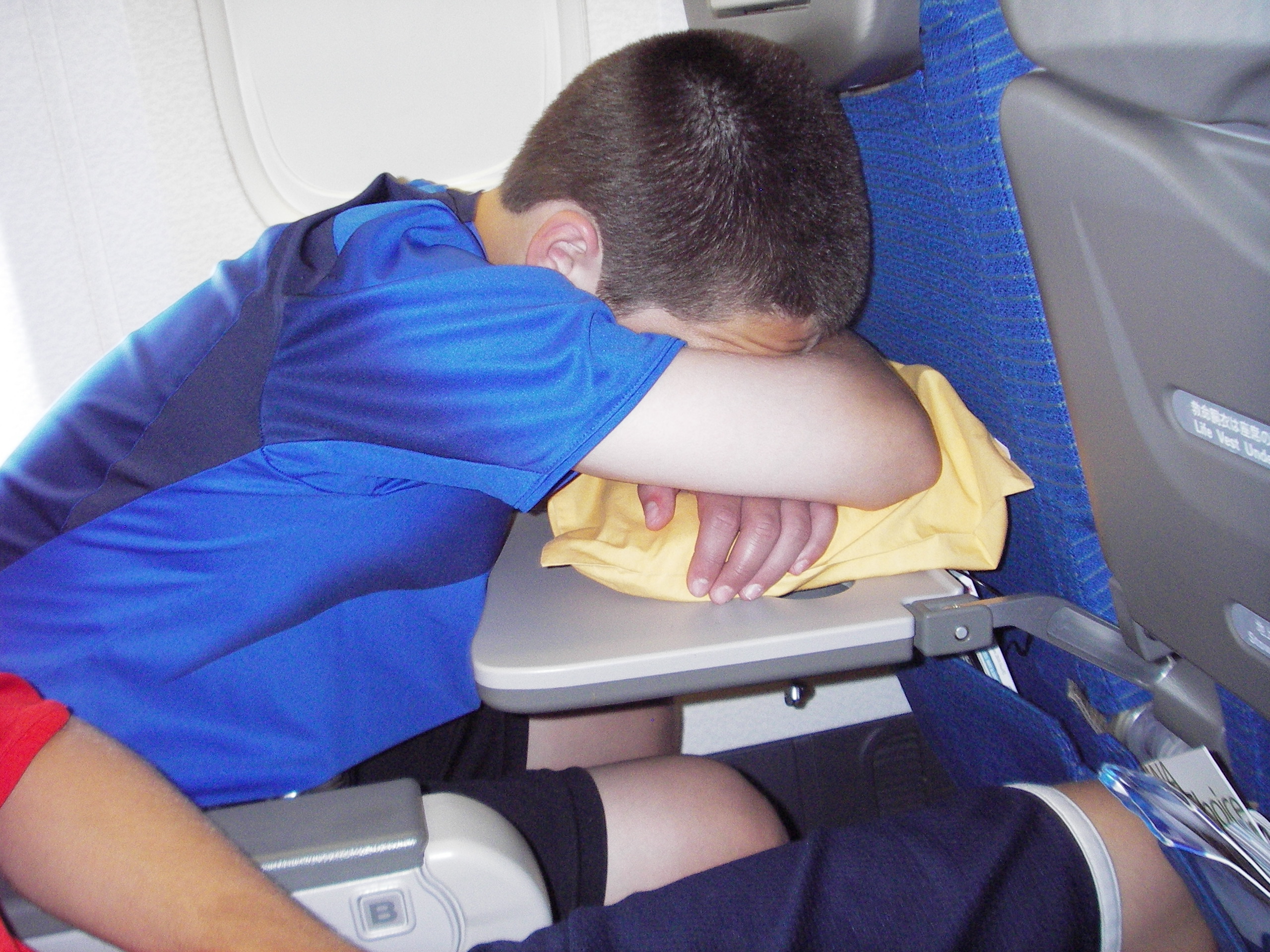 |
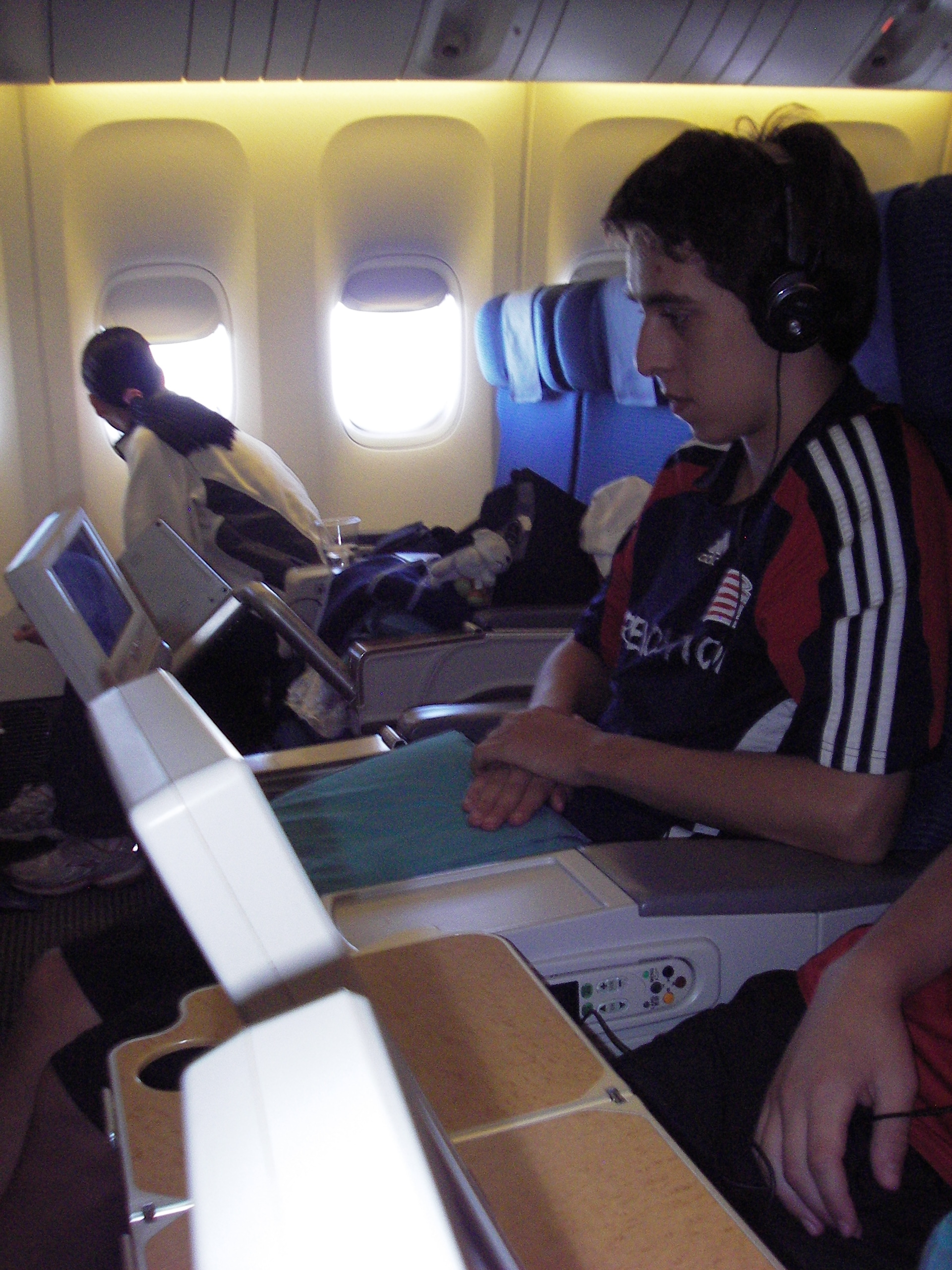 |
Another oddity is that the sun is shining during the entire flight - 14 hours without the sun setting. However, because you cross the international date line, you still lose a day, arriving tomorrow. Wrap your noggin around that one!
The Japanese don't speak English. "No, duh" you are probably saying. Well, before I went, I had understood that the Japanese all study English in school for several years through high school. That, and my experiences in Europe, suggested to me that there would be many Japanese around that would speak English, whether in restaurants or merely out on the streets saying "hi". But there are not. Even Japanese in busy tourist areas often will not speak English, not even a word. I'm not sure if this is because they cannot or just do not want to try, perhaps due to shyness (I get the impression that public failure, even when trying to communicate, is much worse in Japan than in the U.S.).
All the signs are in Japanese. Ok, maybe that should not be a surprise either, but it kinda was. I'd been to Europe (France, Italy, Germany ...) many times and although I don't speak the languages (well, some French), I can still read most everything, allowing me to look up various words in the dictionary or guidebook in a pinch. And in Japan, the main name of the store or restaurant is often in English script (Romanji) leading to the illusion you can read it, but the whole rest of everything else is in Japanese script (Katakana, Hirigana or Kanji). Similarly, directions on packages and in train stations are all in Japanese. For food packages, there are often pictures to help with preparation, but sometimes even these can be a mystery ... if you had never made pancakes, could you do so from the pictures on the box below?
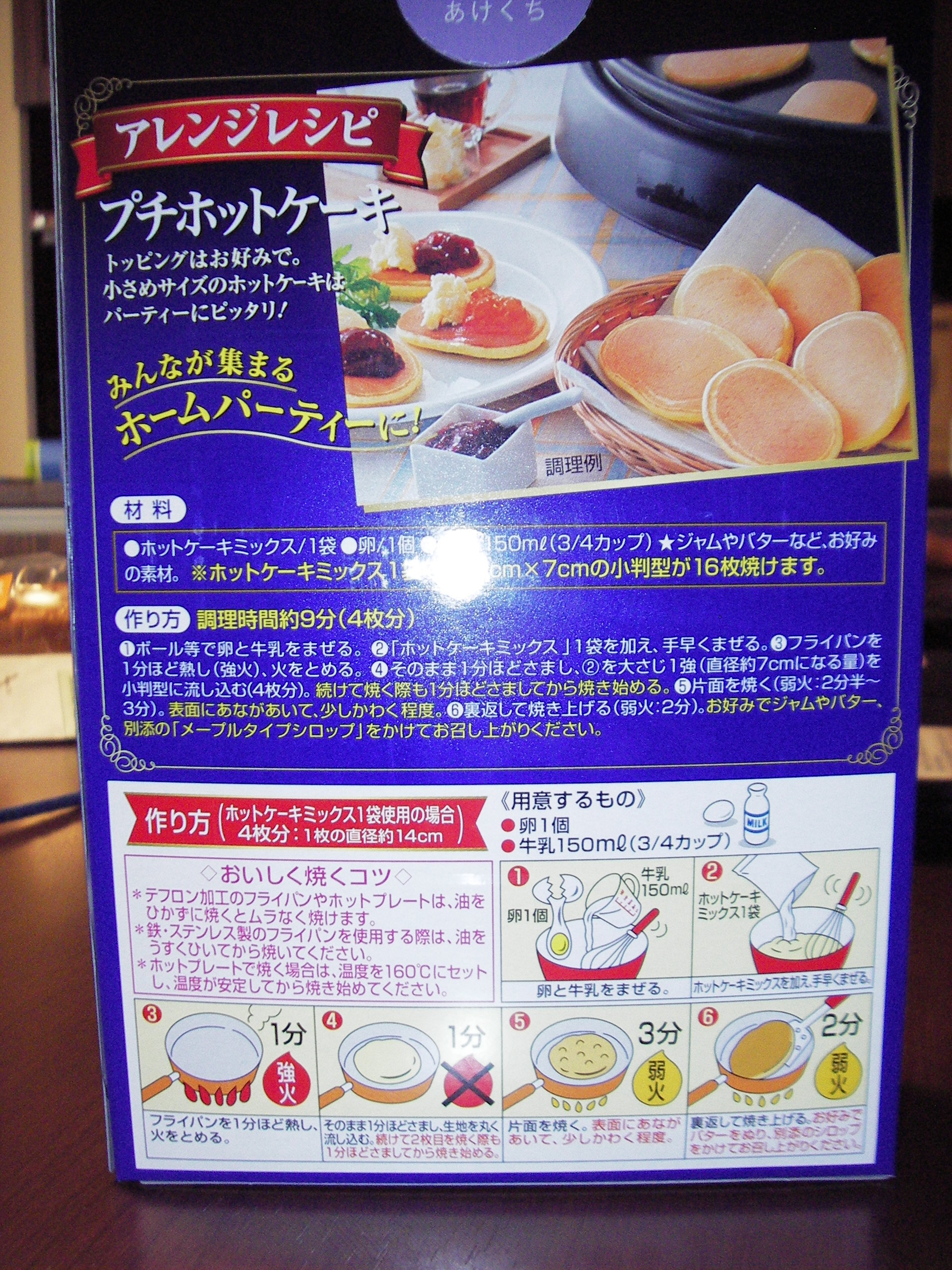
When in hotels and riding gondolas up the many mountains (the Japanese call these "rope-ways") and similar places with foreigners (Gaijin), directions are sometimes translated into English. While these translations can often be informative, some turn out to be hilarious. Check out the English on the box of a pizza take-out.
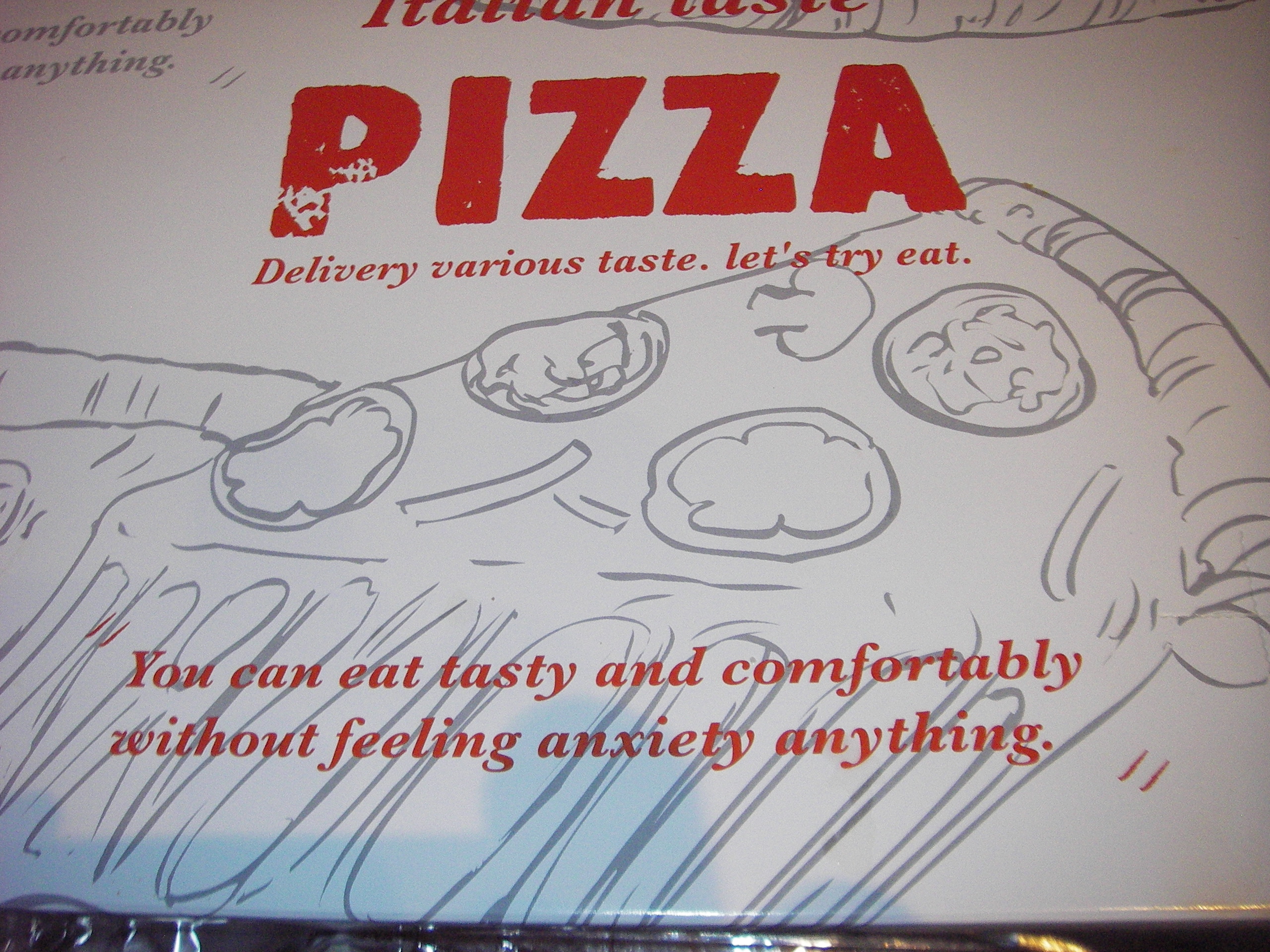
Some other funny translations stem from the difficulty for the Japanese to say the letter "l" (it doesn't exist in their language). For example, the Indian word for spices is "Masala" and I found a restaurant named "Masara" in Kyoto. In another restaurant, I also found a beverage spelled and pronounced on the menu as "Cora" which was, of course, a "Cola".
Vehicles in Japan are fun. Cars are cute, small and boxy. Trucks are usually tiny (my boys called their largest, 10-wheelers the Japanese 18-wheeler), ala the mini fire truck.
 |
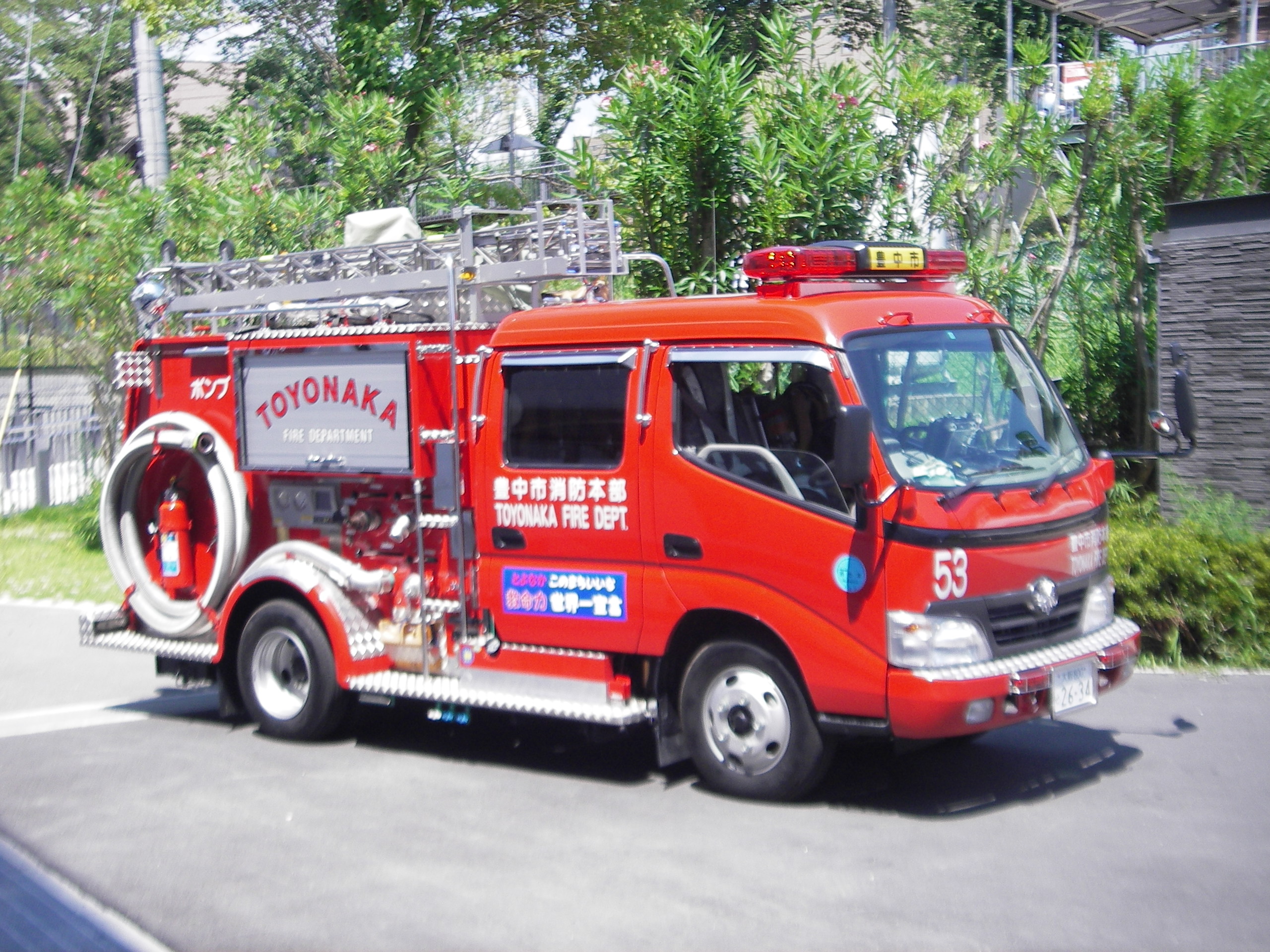 |
 |
The roads are full of Japanese cars, but there are some European cars, too (Mercedes and BMW). In my 5 weeks there, I only saw two American cars - a souped-up, yellow PT Cruiser and a Jeep Grand Cherokee. Probably tough to get those fixed in Japan.
The bicycle is ubiquitous in many parts of the city. Makes sense given the population density and the fact that you have to prove that you have a parking spot in Japan before you can even buy a car. Most of the bikes in Japan are not your fancy, multi-speed hybrid or road bike that you find in the U.S. Instead, they are mostly a basic tooling around bike, getting you from point A to point B with one gear. And no one locks them up. Well, not really. They have these locks that go through the spokes to stop the bike from rolling, but nothing like the 1-inch thick kryptonite locks you often find in the U.S., bolting the bike to an immovable object.
 |
 |
Accompanying the bikes and tiny cars are a wide range of scooters with two and three wheels and low-riding bikes and various things like that. The array of transportation is fun to watch!
 |
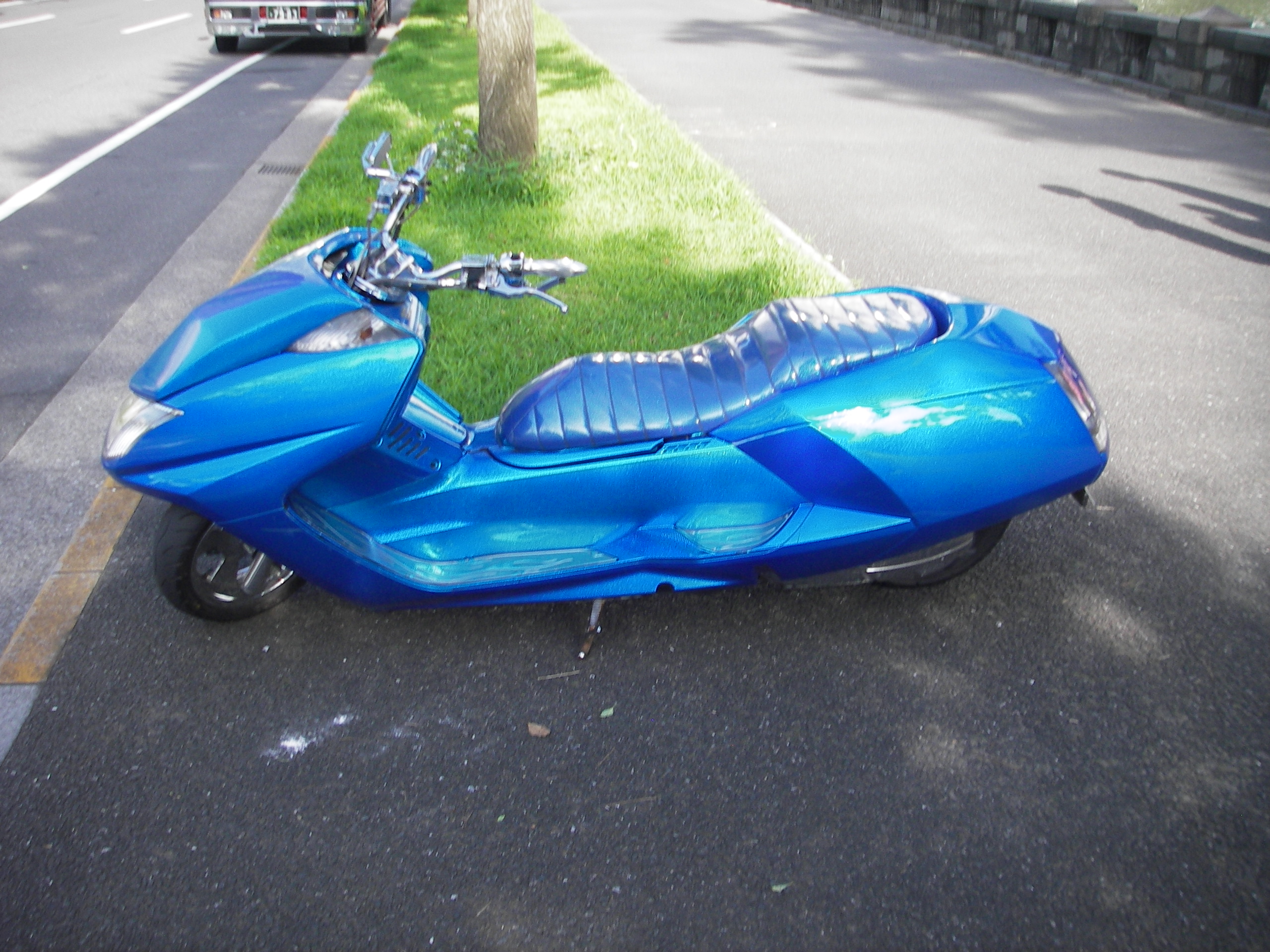 |
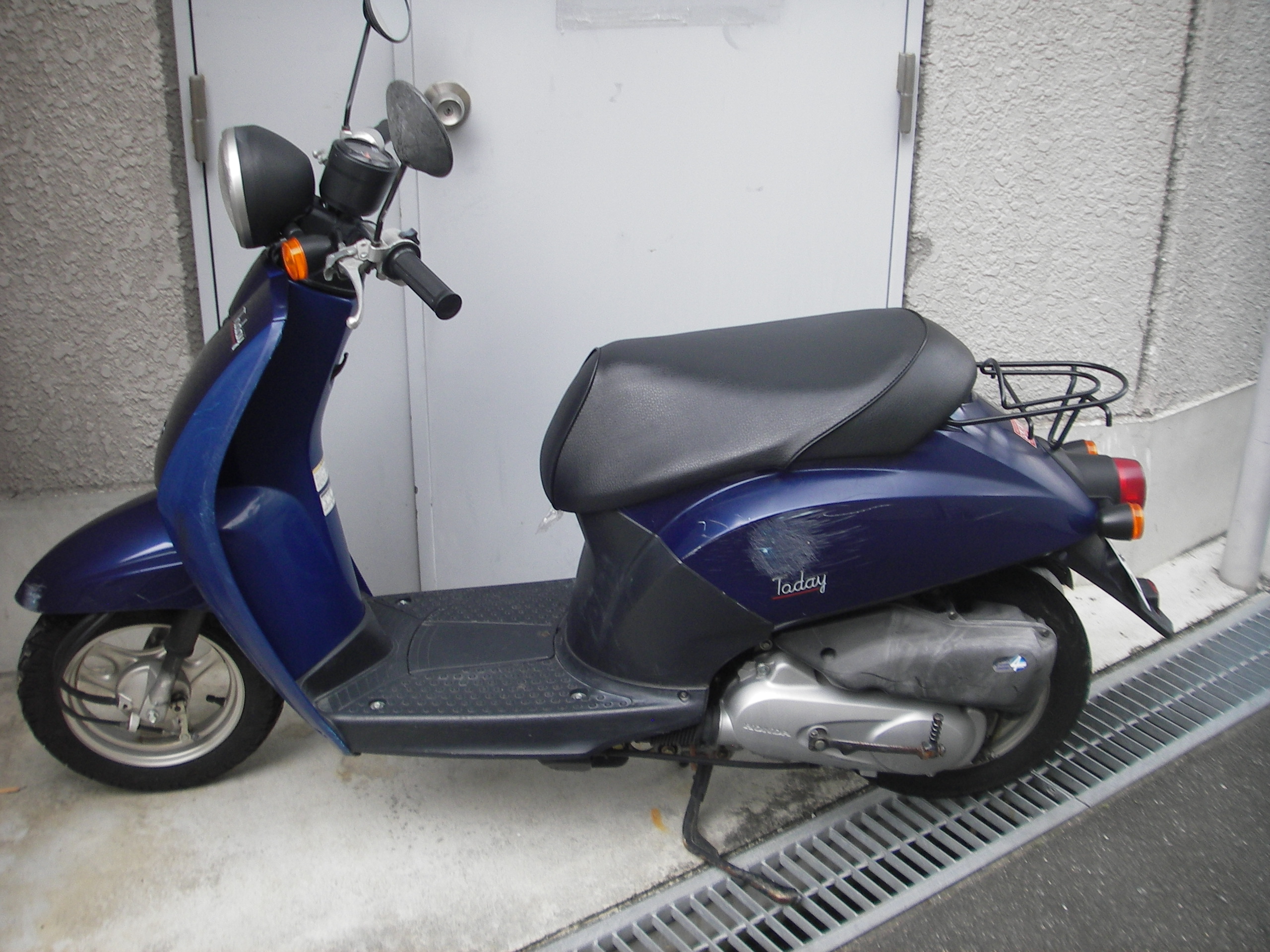 |
There seem to be subways in every major city, and even some subways more minor cities. Japanese subways are pretty easy to navigate, but in some of the larger cities there have emerged these vast, underground malls (ala the Umeda district in Osaka) around the subway stops. These malls are somewhat claustrophobia-inducing, low-ceilinged, crowded, and sorta randomly laid out like rabbit warrens. Getting through them and to the right train or exit can take a bit of trial and error and perseverance.
But the pride of Japanese travel is the Shinkansen, aka the "Bullet Train". Shinkansen, all varieties, are a super nice way to travel. Roomy, quiet, air conditioned and fast with cart ladies wheeling food and drinks as you relax in comfort. Zipping along at 169 miles per hour (I clocked it on a GPS app I downloaded while on the train), sipping an ice coffee, watching rice patties and towns go by ... nothing quite like it. Oh, and Japanese trains are on-time. If it says departure at 15:13 (the Japanese use military time - very sensible), then it will leave at 15:13, not a minute earlier or later. And if they say the train will make a "brief stop at station such and such" and you have to get off at that station, you better move your hiney since they do mean brief (I timed it - a "brief stop" is a bit less than 60 seconds).
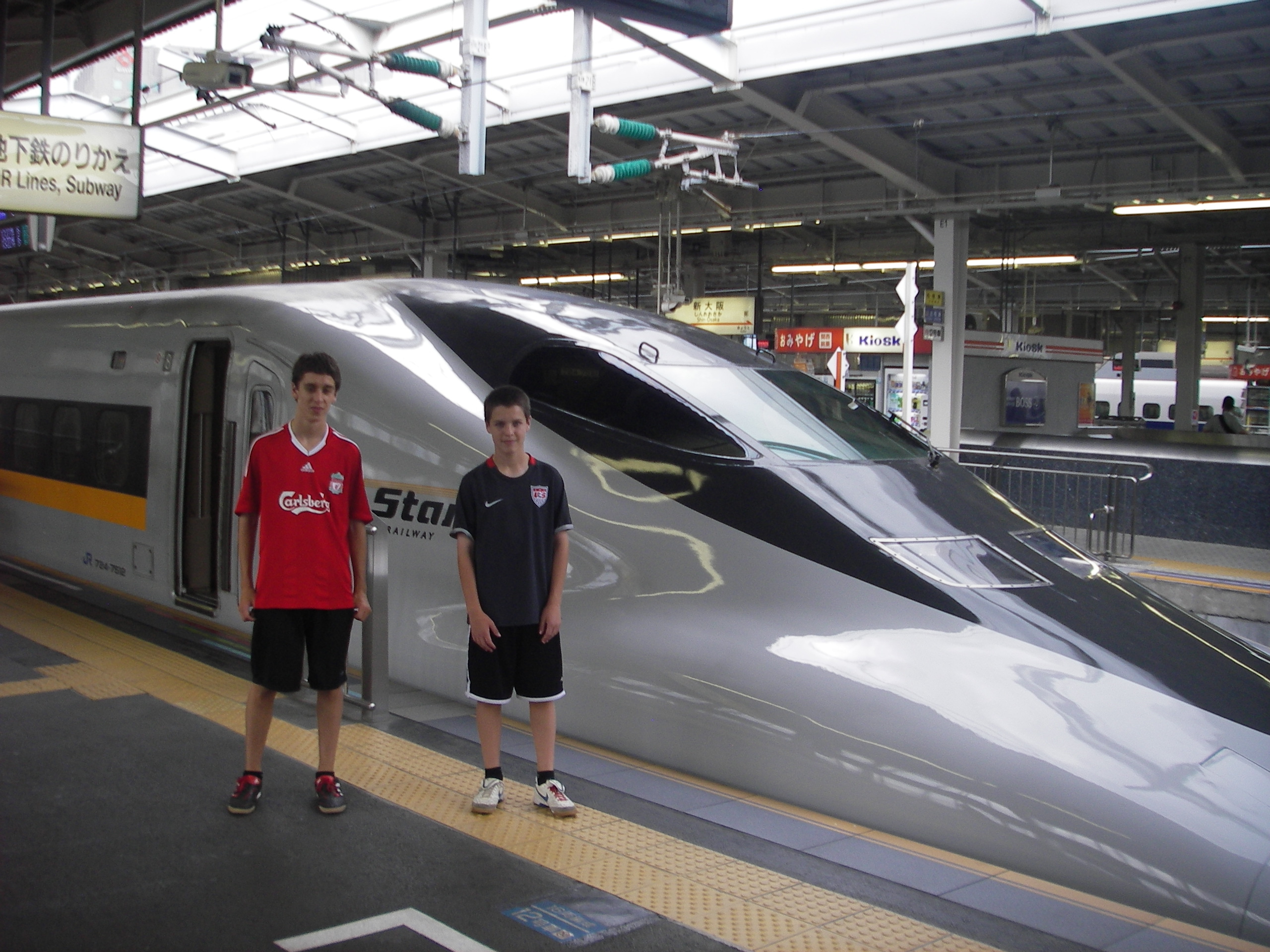 |
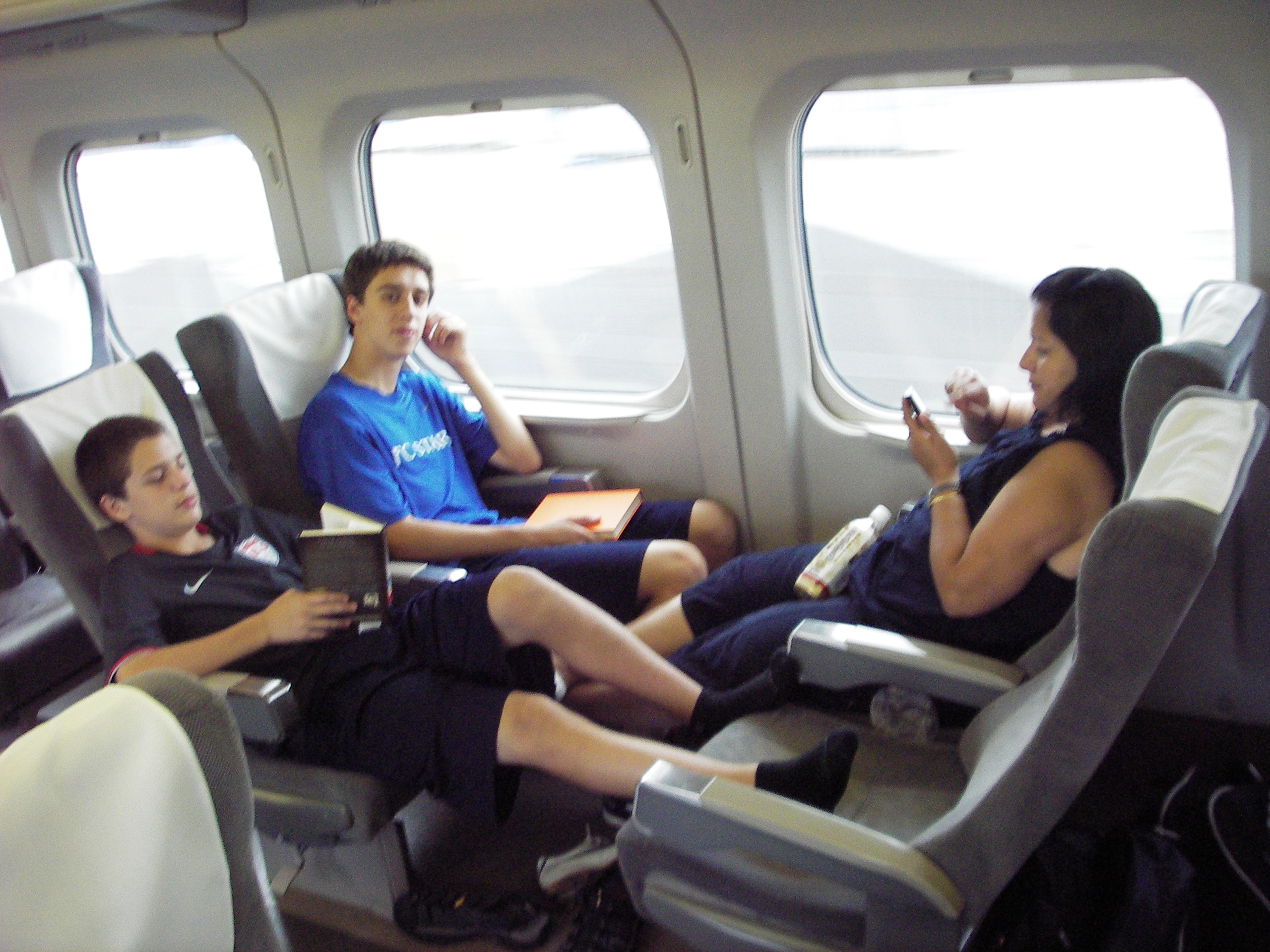 |
Although massively homogeneous (in race, culture and language) Japan is a fine place to be a foreigner. Being a tall white dude wearing American-style duds (ok, I wear a lot of soccer shirts but always have a baseball cap on), I rather stood out without even opening my mouth to blather in English. Despite this, I rarely felt uncomfortable as if I did actually stand out. The Japanese took my outsiderness in stride, without staring or giving me a hard time, even when I was trying to make transactions or ask for special requests in English. Generally, most everyone in Japan seems friendly and helpful. I can count on one hand the number of times I encountered someone that was abrupt or grumpy.
Many times, I would be fumbling around with a map or trying to decipher what subway fare I owed when a helpful Japanese person would come by and point or show or sometimes, rarely, talk in English to help me. All just to be nice, seeking nothing in return. In Tokyo one time, I asked for directions to the Sword Museum (not worth the trip, btw, unless you are a Japanese sword geek) from an elderly gentleman manning a bike parking lot. He personally escorted me and my family down the block and around the corner to show us where the museum was. All for an "Arigato", nothing more.
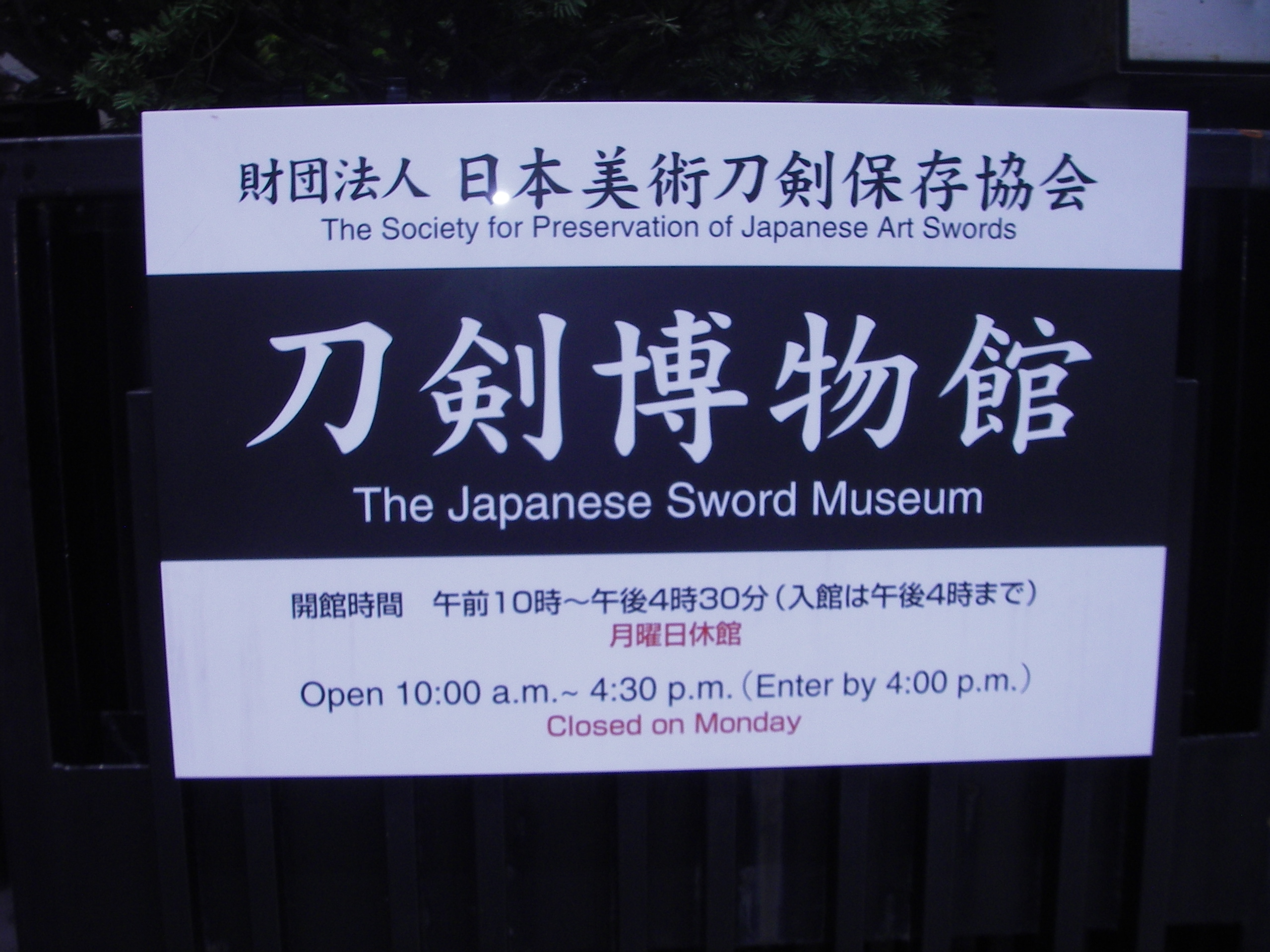
This general helpfulness is especially true with the Japanese customer service. Most stores have many clerks floating around, but not pressuring, that make sure to be available if you need help. With most requests, they clerks go out of their way to help you. While staying at a hotel in Hiroshima, one clerk spent considerable time trying to help me get my wife's iPad connected to the wireless network. He had no experience with iPads and very little with networking, but that didn't stop him from finding manuals, asking his colleagues and ultimately hauling out a 300 foot Ethernet cable for me to use (all for naught, since the iPad has no Ethernet port). Another time, my wife sought anti-itch cream at a pharmacy for a wrist-rash she had. Several clerks, one of which was the pharmacist, pored over her wrist for some time, chattering in Japanese trying to figure out what was wrong. While waiting, they made me and my boys hot lemonade (odd, but good).
What took the cake, tho, was my wife's experience in getting a vegetarian meal ordered for her flight back. About a day in advance, she called United Airlines back in the U.S. to get a vegetarian meal for the return flight since they had messed up on the way out. After being disconnected several times and being on hold, the U.S. customer service representative said she was just outside the 24 hour window (it was 23.5 hours until departure) and there was nothing she could do. She was abrupt, and firm and didn't even want to try. So, when leaving, my wife goes to the Kansai International airport in Osaka (KIX) and checks in about 2 hours before her flight. She asks the Japanese customer service person there if she can get a vegetarian meal for the flight, without providing any lengthy explanation. Almost without a pause, the service rep gets her manager on the phone and arranges a vegetarian meal, no problem.
Japan is clean. Extraordinarily clean given the number of people in such a tight space (Japan has about 1/2 the population of the U.S. in a space about the size of California, but with about 70% mountains). There is almost no trash or graffiti anywhere. And this despite the lack of trash cans in many areas. In fact, the Japanese are very particular about trash, sorting their refuse into complicated piles: burnable, non-burnable, paper, various plastic types, cans and large stuff. When touring about, I found it easiest to just stuff trash in my backpack and sort the mess when I got back to our apartment.
Keeping with cleanliness, the Japanese are very particular about where they wear their footwear. You never wear shoes inside. This I like since we don't wear shoes inside our home in the U.S., but the Japanese take this to another level. Shoes are not appropriate in many other places, either. No shoes in temples, for example and some shrines. Shoes are removed before entering some castles I toured! And no shoes in hotel rooms (Japanese style rooms - watashi-wa - at least). The office I worked in was nice enough to buy me slippers. Why? Everyone in the office takes off their shoes and puts on slippers when at work.

This cleanliness doesn't totally translate to environmental friendliness, at least not for packaging. The Japanese package everything you buy. And I mean everything. You go in to buy a single item, they put it in a bag. You have a bag of stuff, they put it in more bags. Your have several pastries, each gets its own bag and then the whole lot gets a bag. And that bag gets some tape, for good measure. I think all this packaging is expected by the shopping populace. If you buy something, no matter how small, it gets put into a bag. Maybe even two bags. With tape. And some bubble wrap. And that's not just the store clerk, but also happens when you buy packaged food items. A box of cookies? There will be a bag inside. Even store-bought cookies will have bags within bags. A sleeve of chips? Expect another bag liner inside. And each chip will be individually saran-wrapped (ok, I'm kidding about that one).
The Japanese eat a lot of rice, yep, but also a whole bunch of noodle dishes and soups. Since soups, noodles and rice with interesting sauces make for a fine meatless base, I thought being a vegetarian in Japan would not be too hard. Unfortunately, there is meat in most dishes in Japan. Even those dishes that look like they don't have meat (and you can see what the dishes look like at most restaurants courtesy of the plastic food most stores have in the front windows), often have a chicken or fish stock or some meat-based gravy. Even sushi, which is everywhere and should be able to become fine vegetarian fare, almost always incorporates seafood. The presence of the plastic food does help as a visual aid to figure out what dishes have meat and what dishes do not, but sometimes its hard to guess as to vegetarian content.
Fortunately, there are numerous Italian restaurants that do serve cheese pizzas and vegetarian pasta dishes. Plus, a lot of French boulangeries with yummy pastries of all sorts. And egg salad sandwiches are prevalent in many cafes and even pre-packaged at a number of convenience stores.
Hamburgers seem to be popular in Japan. There are bunches of McDonald's and even some Burger King's (bummer that there are no BK Veggies, tho). A few Japanese burger chains, such as Lotteria, are numerous, too. While in general, Japanese portions tend to be a lot smaller than American portions, many of these burger joints boast multi-patty beasties (even BK and Micky-D's) the likes of which aren't available in the U.S...
 |
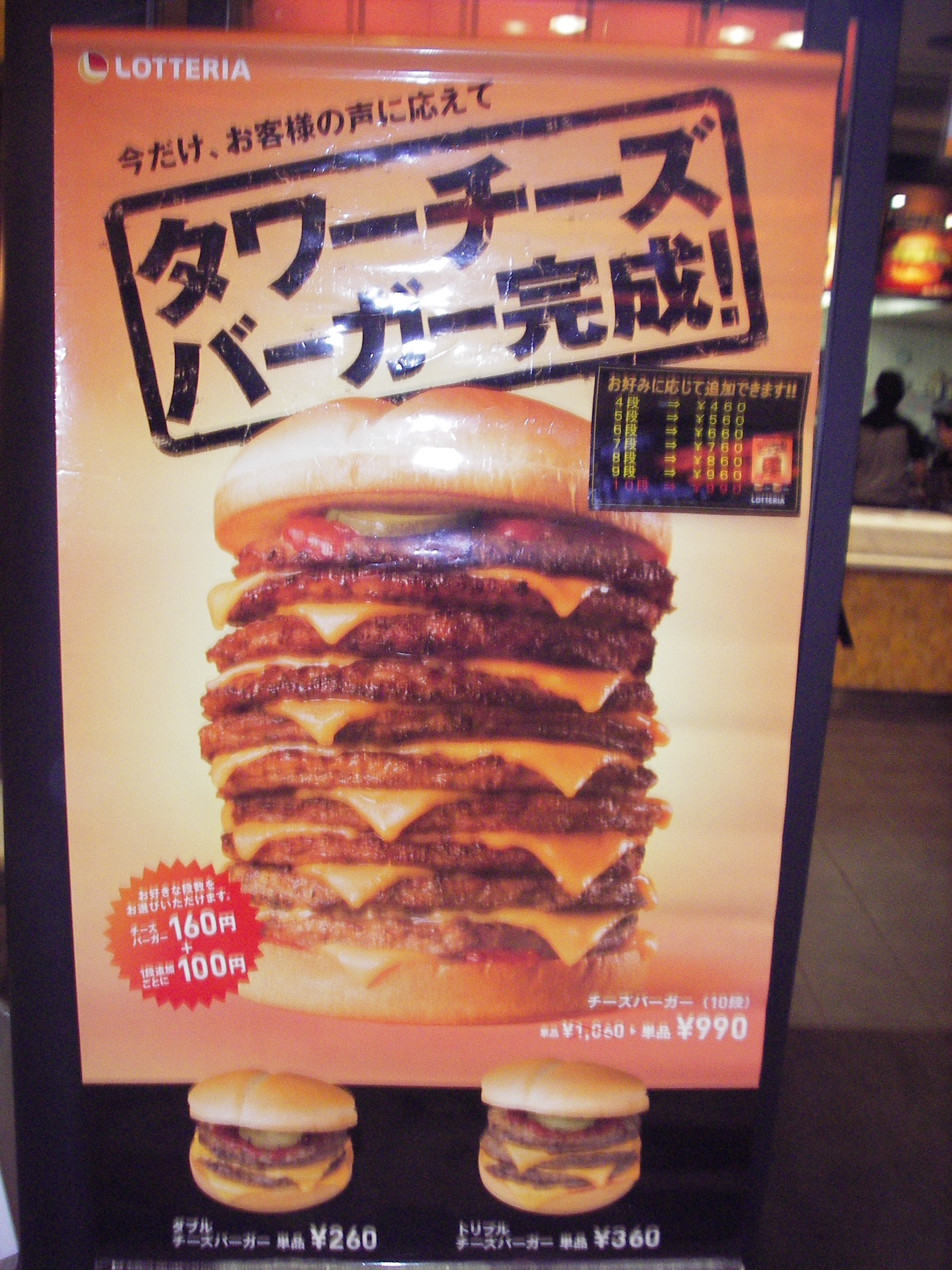 |
Hmm. Perhaps a Western contribution to Japan food culture is the heart-disease burger. I hope that trend doesn't continue, since the Japanese diet (low in fat, small portions) coupled with lots of walking (you have to walk a bunch to get most anyplace in the city, subway or not) seems to keep the Japanese populace much thinner than the American populace.
While rice is a staple in Japanese meals, sandwich bread is readily available (this made for good, emergency on-the-go PBJs). Generally, Japanese sandwich bread is the soft, gooey, tasty and totally worthless of nutrition kind of white bread. But the most interesting thing is that you buy bread by the thickness. The number on the package indicates how many slices of bread are in the loaf. So, "6" bread means the loaf has 6 slices, while the same size loaf listed as "4" will have 4 super-thick slices. The 6-bread, the most common size, is sorta like the thick Texas-toast bread you get in America while the 4-bread is of ridiculous-sized thickness. I had to cut the 4-bread slices in half (lengthwise down the center of the slice) to make them work for anything. Yes, you can find slices as thin as 10-bread, but not very often. So, I got used to thick sandwiches, layered with extra cheese, gobs of peanut butter (available in niche stores in Japan) or whatever.
You can find pizza in Japan, some of it quite good. They even have Pizza Hut in places and a few other home delivery options. It's not nearly as common as pizza in the U.S., but it is there. But while pizza in the U.S. is cheap, student-type food, pizza in Japan is really expensive. It costs about $40 for a large cheese pizza(!), and typical of most Japanese portions, the large is more like a U.S. medium. One night in Japan, missing the hot, gooey cheesiness that is pizza from the U.S., I ordered some take-out pizza for our family. It took awhile to get the order right since the Japanese put all sorts of odd ingredients on their pies - stuff that doesn't belong on a pizza like tuna, mayonnaise, and various seafood parts .... Anyway, I found 2 vegetarian pizzas and placed the order. Total cost $75 (well, that included a cheapo salad, but still)! Dominoes back at home in the U.S. can comfortably feed my whole family for about $20.
While pizza in Japan is a novelty, sushi in Japan is far less so. This flip-flow opposite of the U.S. was apparent at a party that Osaka University hosted for their students and the American WPI students. At this party, they served a whole bunch of pizza and sushi (and osembe), buffet-style. The American students were, like, "Wow, sushi!" while the Japanese students were, like, "Wow, pizza!" Everyone was a happy camper.
Japan has bunches of vending machines, something like 1 for every 20 people in the country. I had heard this before I went, but it is another thing to see them everywhere. Need a drink? Go a block or so, and you'll find a vending machine with a cold beverage. That machine not have your favorite flavor of soda? Walk another block to the next one and you are bound to score there. Even the trains have vending machines installed between cars. The vending machines are mostly drink vending machines (as opposed to snacks), providing a variety of sodas and iced coffees. It's pretty easy to figure out what drinks are, say, soda or coffee or beer (yep, in vending machines, too), but a few times I messed up and got unsweetened, black, cold coffee or some bitter, cold unsweetened tea. I gotta have my sugar and would like to have my cream when the bevy is cold.
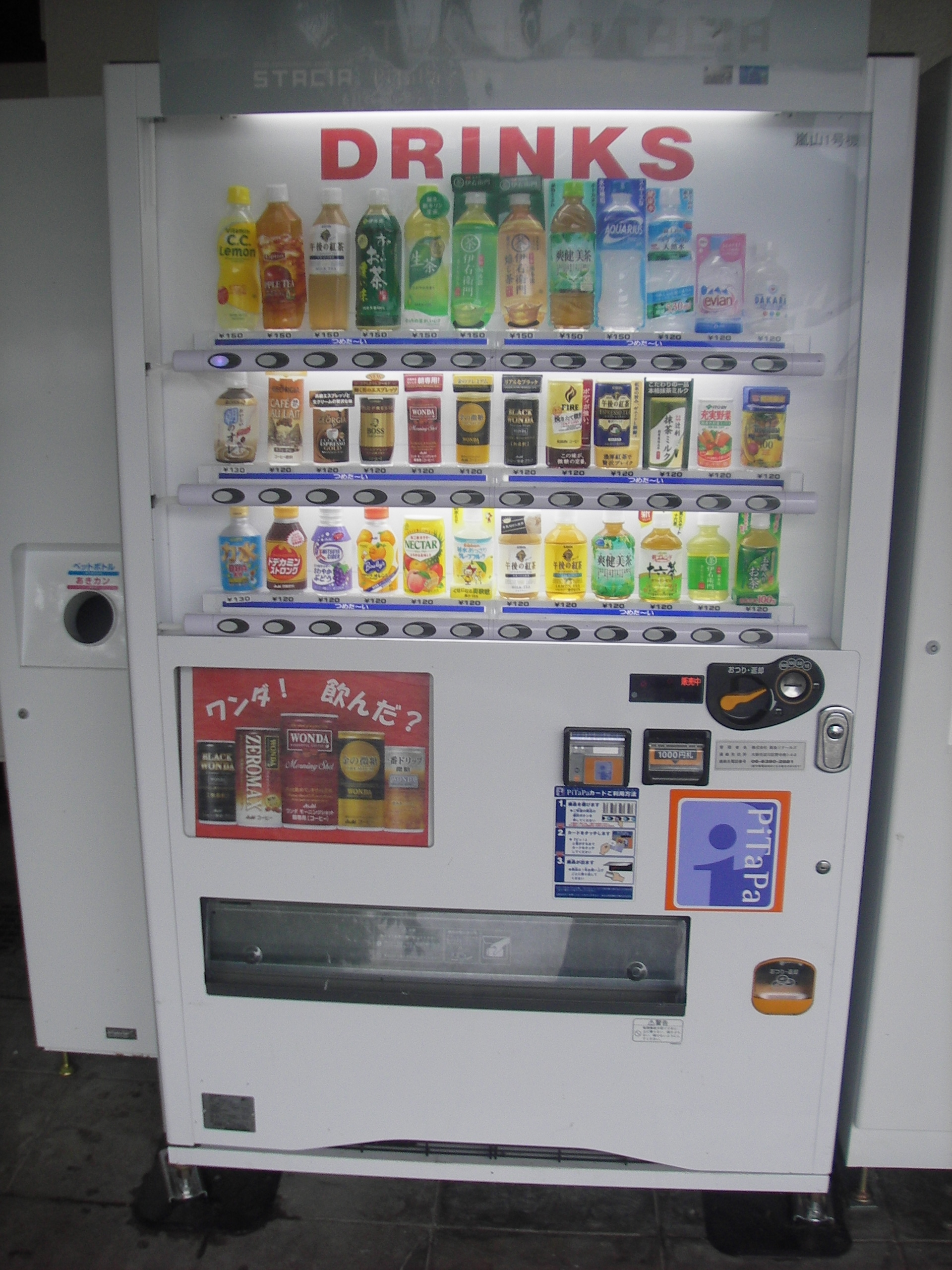
Speaking (writing) of coffee, Japan has the most awesome types and availability of iced coffees that I've ever seen. These are called, conveniently, "aisu koh-hee" or "cafe-o-ray". You can get them at all restaurants or cafes or bottled or canned in convenience stores or, of course, in vending machines. There is a huge array of companies that make iced coffee in all sorts of flavors and sizes. I immensely enjoyed working my way through all the different kinds I could find, with my favorite being the very first kind that I had - Boss Deep French Roast.
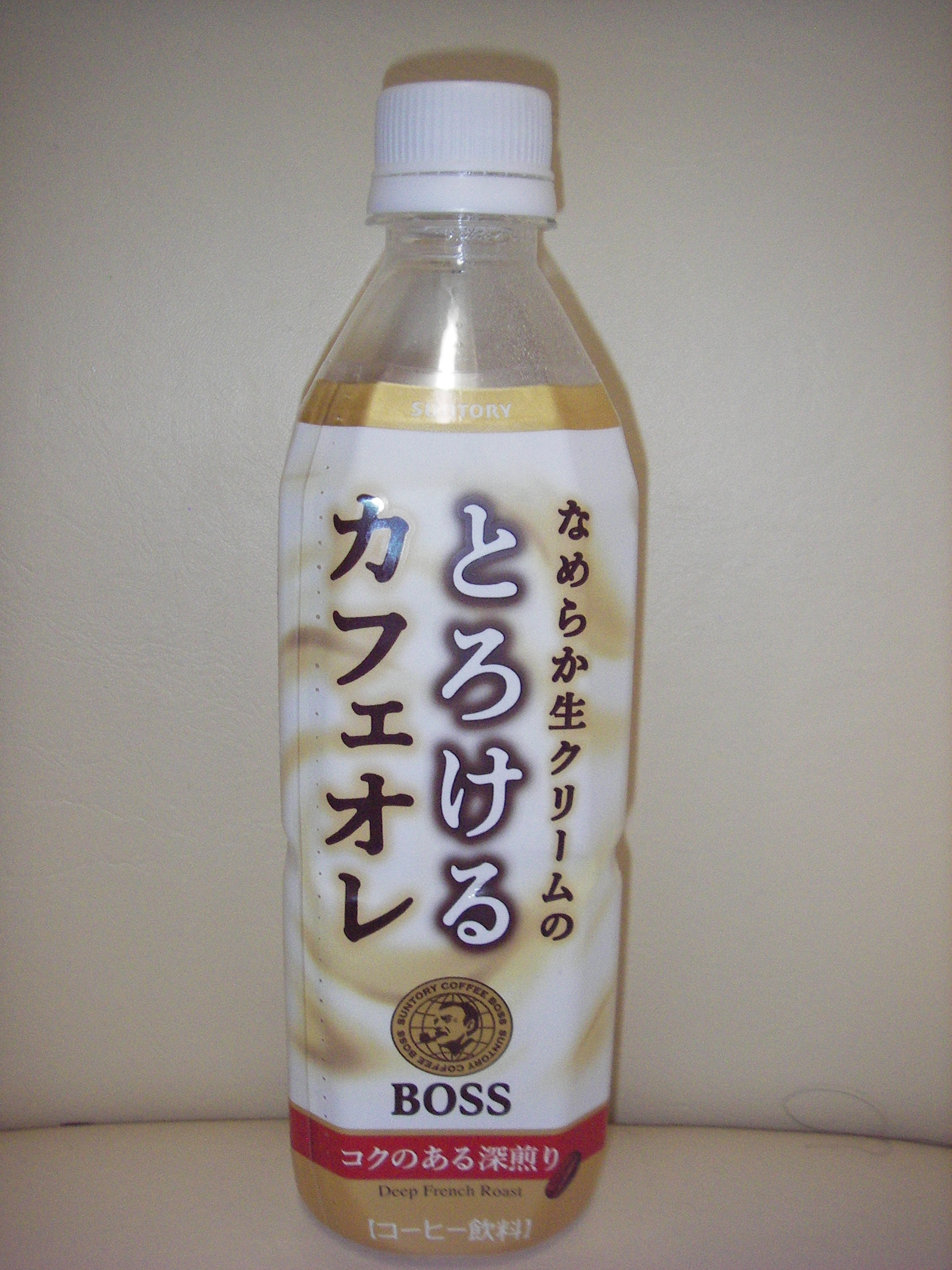
They also have this funny soda called C.C. Lemon, kind of a sparkling lemonade-tasting beverage. The soda is funny because of the number of lemons worth of vitamin C supposedly in each bottle. The small (like a normal, can-sized small) has, like, 50 lemons in it! One night after playing soccer (and it can be hot and sticky in Japan, especially in the summer - mushi, mushi), my eldest son drank a large bottle of the C.C. lemon stuff (it was his favorite) that had 210 lemons worth! His lemon quota should be all set for the next year.
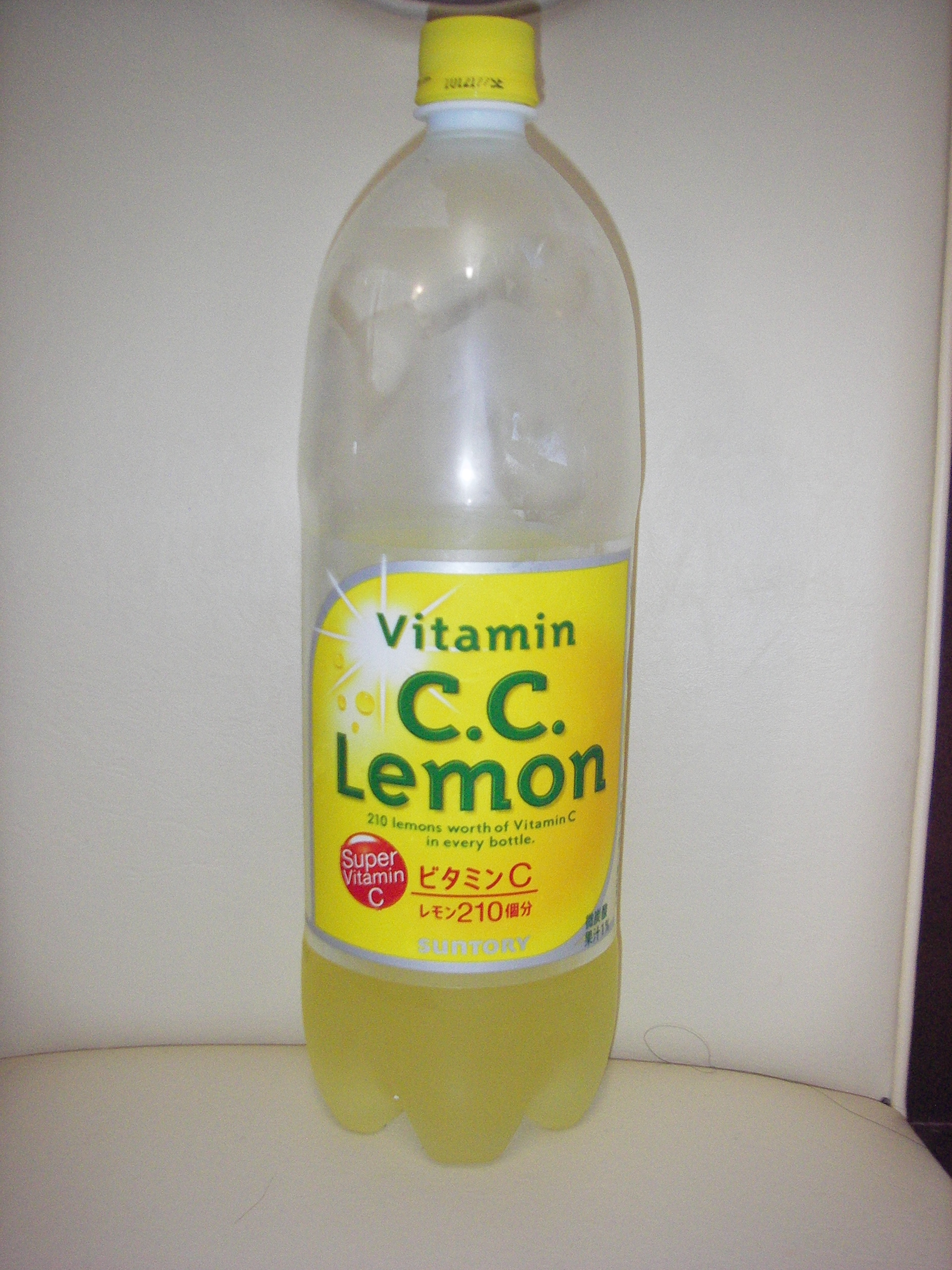
At the other end of food are toilets, and these are an experience in themselves. In high-end hotels and museums, you'll often find fancy toilets with all sorts of buttons next to the seat. Most of the buttons are for clean-up, water spray adjustments, such as power and spread with options for man or woman. Some seats have dryers and others have built in seat warmers (great for the winter, not so great in the summer). The flushing is often automatic or via a digital button, but even manual flush toilets have options for a small flush (after #1) or a large flush (after #2). Sensible.
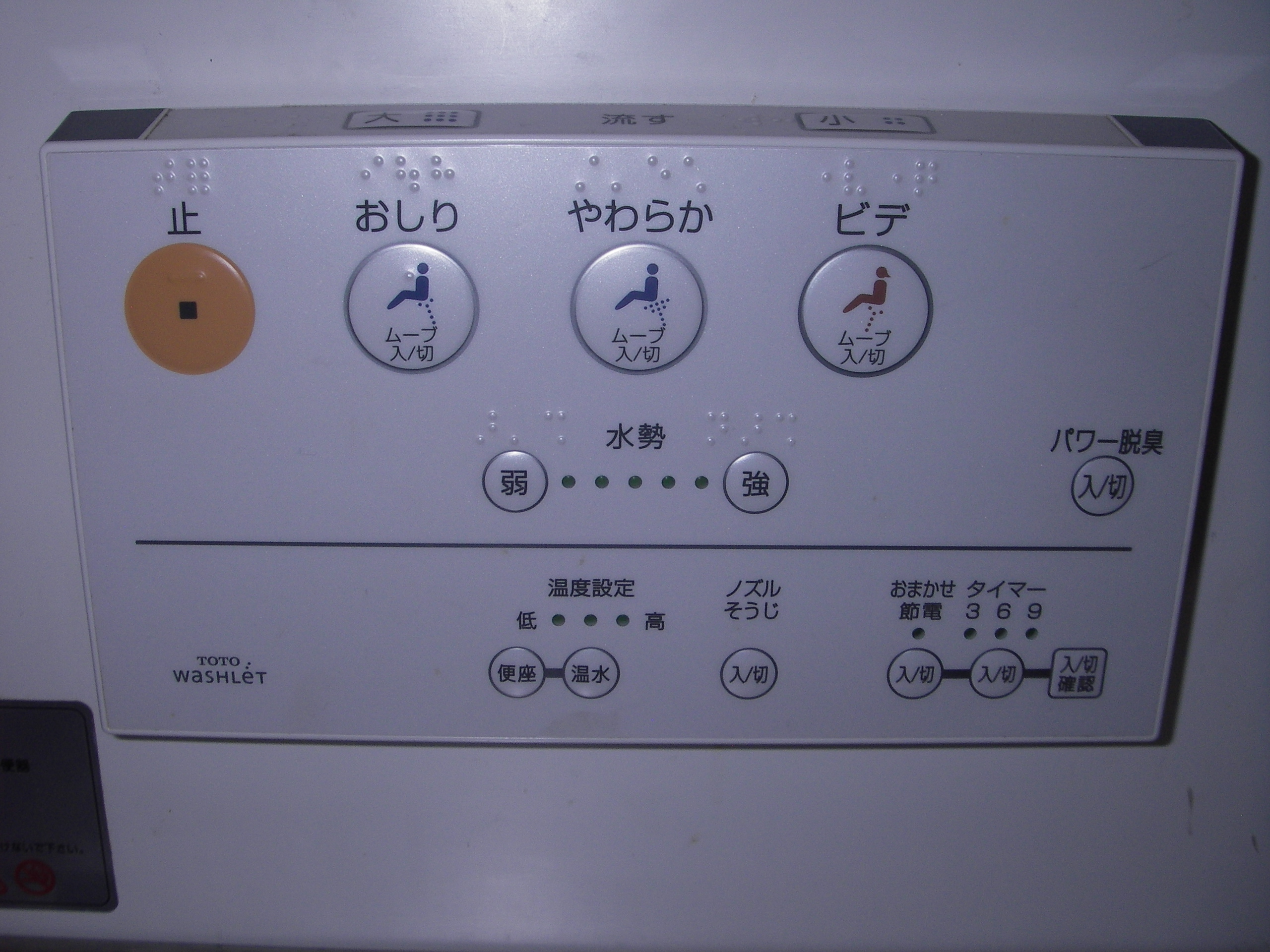
On the other end of all this fanciness is the Japanese-style toilet. This is basically an oblong, ceramic toilet bowl recessed into the ground. You straddle it and squat to do your business. The idea is actually pretty good for hygiene, since you don't have to touch anything. But comfort is an issue (no lingering and reading the paper!) and it is hard on your knees as you get older (me!).
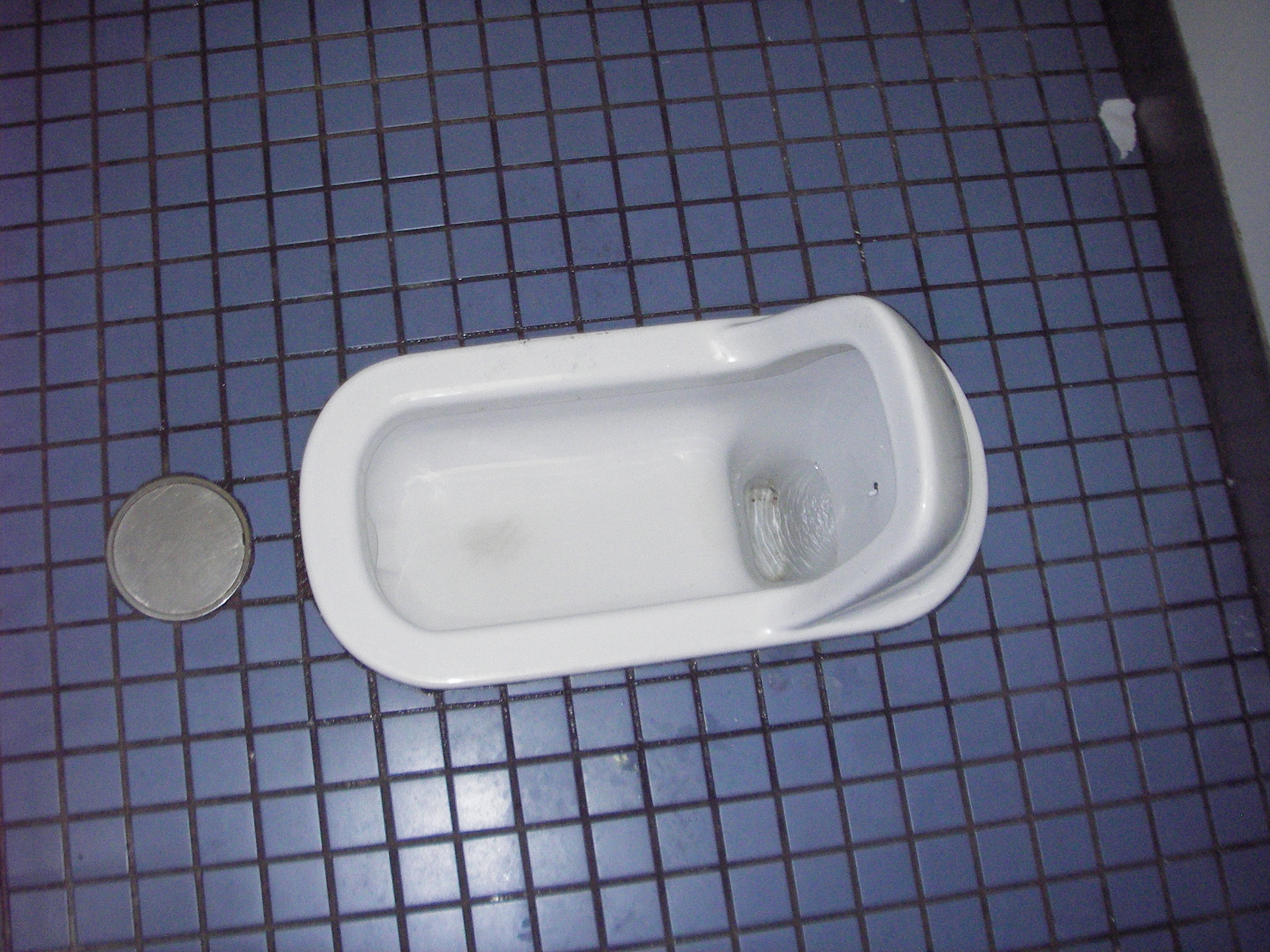
Both kinds of toilets are available in many bathrooms, for those with a preference. The stall door will say "Western" or "Japanese", as appropriate. And the stall doors go all the way to the ground for added privacy. This makes especial sense for the Japanese style toilet since you are squatting near the ground, but it makes it tougher to see if a stall is occupied. For code, when an occupied stall is knocked on, you don't say "taken" or "buzz off", but rather you knock softly back.
Overall, Japanese restrooms are very clean, even in truck stops and public places, say, subway stations. Despite this, you sometimes find bathrooms with no soap - not just out of soap, but none that is provided (ew!). The lack of soap (uncommon, but not unheard of), seems out of place with the clean, super-hygiene oriented toilet technology. I always carried some hand sanitizer for just such situations.
In the Japanese house (and in the University labs and some museums I visited), different shoes (slippers) are provided for the toilet room. You slip off your shoes and slip on the toilet shoes and do your thing. In fact, if there are regular shoes outside the toilet room and the toilet slippers are missing, this is a sign that the toilet is taken. And the Japanese don't call it a "bathroom" since that is the room where you literally take a bath, but usually call it, straightforwardly, the "toilet", although I did see "WC" and "Lavatory" upon occasion. I don't know what sort of response you'd get if you asked for directions to the nearest "restroom".
During rainy season, every Japanese person and their brother carry long-handled, cheapo umbrellas. These cost about $5 and are everywhere, both as seen in stores to buy and as seen on Japanese being carried around. These umbrellas almost seem part of the fashion. If it rains even a bit, a bazillion umbrellas pop open. If the sun breaks through, the umbrellas pop open. Riding a bike? No problem - the Japanese have mastered biking with umbrellas. I saw a dude talking on a cell phone, eating a sandwich, smoking (unfortunately, smoking is more prevalent in Japan than in the U.S.) and holding an umbrella, all while riding a bike! Some clever Japanese even have umbrella holders for their bikes.

Equally prevalent, rain or shine, are the pachinko parlors. These are large, brightly lit, arcade-style rooms with neon signs urging you to come inside, drop some dough and have a great time. I used to have a Pachinko machine as a kid that my mom had brought from Japan. A pachinko machine is sort of like an upright pinball machine with a lever that fires steel balls upward to then cascade down pins into little colored slots for various amounts of points. It was great fun. Pachinko parlors, despite their neon-coated promises, look and sound like anything but great fun. They are loud, almost deafening so, and smoke-filled such that even walking by gives you an unwelcome waft of clothes-soaking smoke. The patrons don't look like they are having fun, instead being glued to the seat, glassy eyed as they pull the levers like drones. As I understand it, some Japanese have problems with gambling (which is essentially what Pachinko parlors provide). Overall, pachinko machines seem a lot like slot machines in the U.S., I guess.
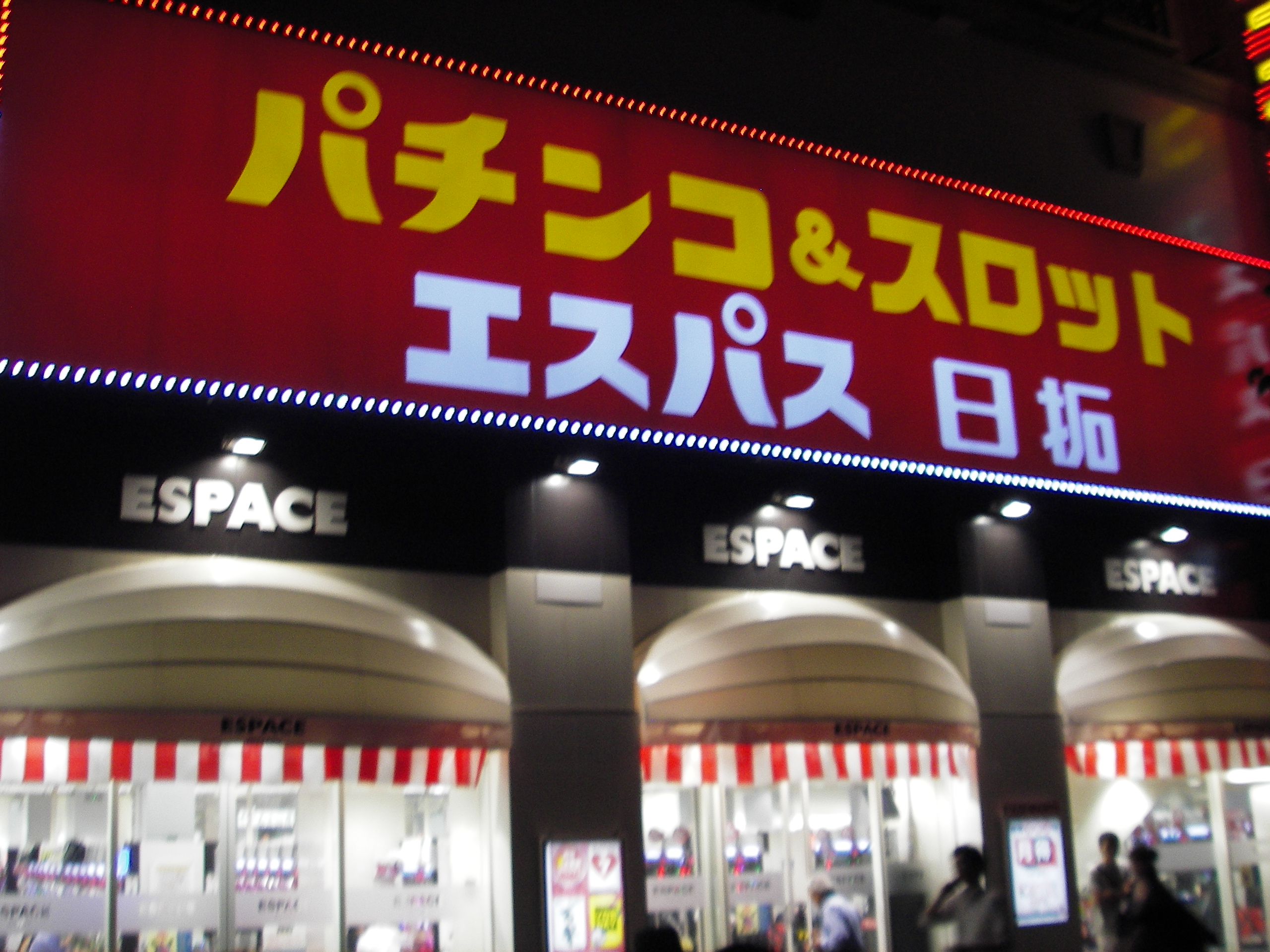 |
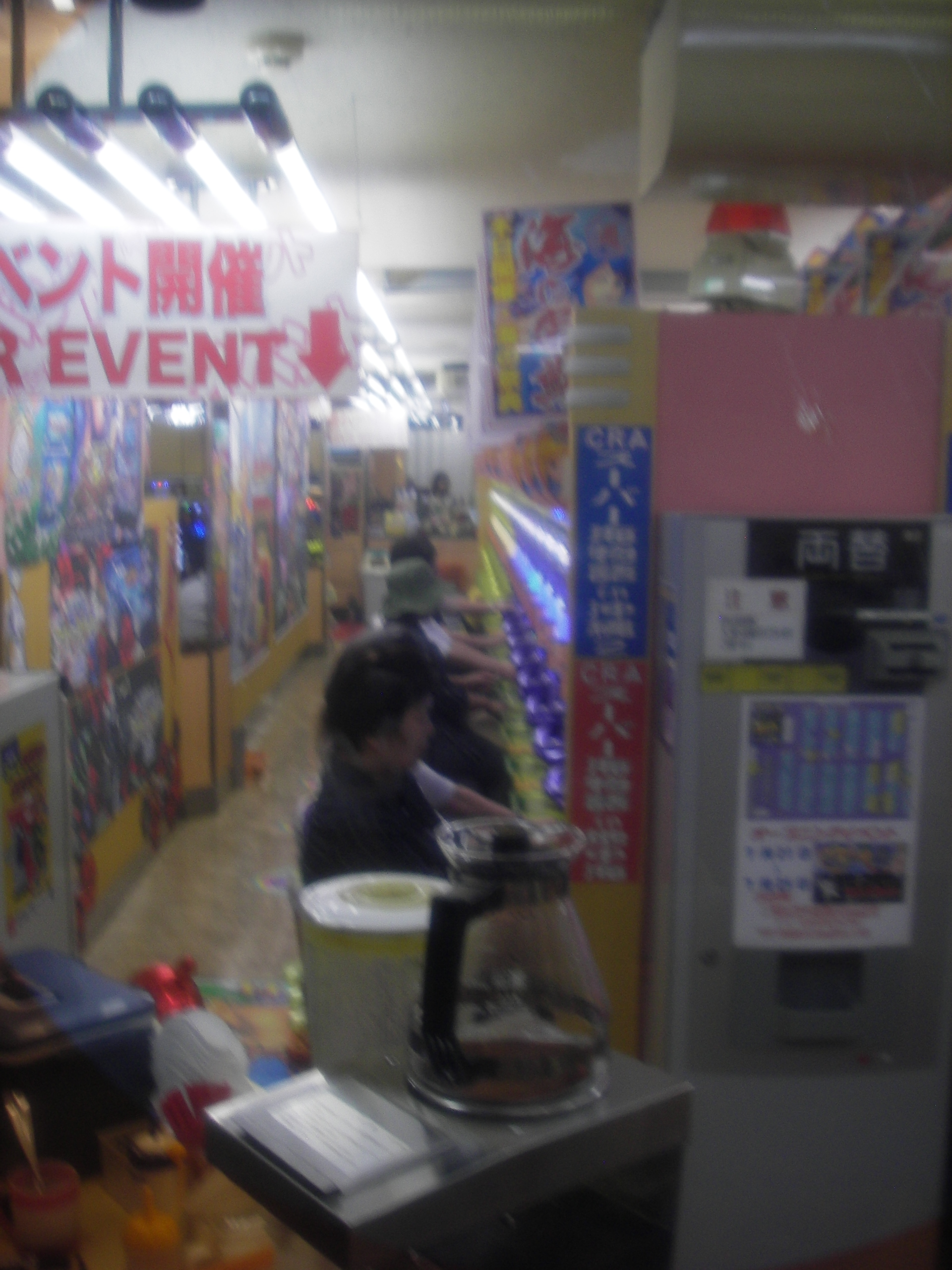 |
Beds in Japan are firm. And by firm, I mean hard. And by hard, I mean like a rock. Ok, that's not fair ... some rocks are softer. Pillows are marginally softer than the beds, but only just. I'm not sure if the firmness stems from the traditional Japanese futon which is spread out right on the floor at bedtime or what, but I had a lot of trouble sleeping (sore shoulders, tossing, turning, pummeling my pillow in a desperate, but futile, attempt to soften it) until I finally, sorta, after many weeks, adjusted to the firmness .... just in time to come back to my softy bed in the U.S. where it is like sleeping in a cloud in comparison.
Soccer is popular in Japan (and they do call it "Sakkaa", not "Football", so there you go, Eurosnobs). Soccer in Japan is a distant second to baseball in popularity, but is gaining (like soccer in the U.S.!), thanks somewhat to the 2002 FIFA World Cup Japan hosted (along with co-host South Korea).
Being the soccer-loving family that we are, I took my boys to a J-1 League (Japanese, top-tier professional soccer) game. The most popular, long-standing Osaka team named Gamba unfortunately had no home games when I was visiting. However, a second Osaka team, Cerezo Osaka, had just been promoted from the J-2 League to the J-1 league and had a game that fit our travel plans. It was great fun!
 |
 |
There were some notable differences in the J-League game compared with the Major League Soccer (MLS) games in the U.S. In particular, the Japanese don't sing their national anthem before the game. Instead, they sing the team song. The Cerezo Osaka team song is rather sappy, I must say, but they followed it with a pretty rockin' Oh-Oh-Oh-Saka song. And, unlike in the U.S. when we sing, in Japan there is great audience participation! The stands swell with song from all sides. The place was rocking by the end of the warm-ups, with give-and-take chants from the announcer and the fans. Maybe that's from all the Karaoke the Japanese do. Fans cheer and yell and sections of coordinated fans in the end-zone chant and jump and generally carry on regardless of the action. It is all quite lively.
While the J-League action and skill is comparable to that of the MLS, I must admit that the Cerezo team has more slick passing, give-and-goes and all around creative play than most MLS teams. They make use of the chip pass a lot more and drive their corner and free kicks.
A notable difference in the fan reactions in Japan compared with fan reactions in the U.S. is the lack of booing or dissent of any kind. In the U.S., fans will boo the ref or boo the other players or generally get all in an uproar if calls and plays don't go the way of the home team. The Japanese fans don't do any of this. No dissent, no griping. During the game I saw, the ref or other players didn't get a single boo. Even when one of the Cerezo players was red-carded and removed from the game, there was not a murmur. As a joke, my son let out a small "boo" when the other team made a stalling type of sub ... the Japanese lady in front turned around and looked at him in shock. And every time the home team scored, the board announced "More Goals, Please!" ... they even ask for goals politely in Japan ;-).
There are far fewer hawkers patrolling the stadium aisles selling food and drink stuffs. I only saw a beer hawker, in fact, and only a few times at that. In the U.S., hawkers are regular and the stuff they sell is expensive. Eight bucks for a soda in the U.S., but I got sodas at the Cerezo game for about one-fifty.
In the U.S., families with little kids will often bail from soccer games at half-time, maybe since the kids are fidgeting or tired or the score is too low (no touchdowns) or something. But Japanese fans generally stay until the very end of the match, with very few leavers. Even families with little kids have the kids stay and watch until the final whistle.
Oh, and Cerezo won the game I watched, 3-0 ,on some very nice play. Yay for the home team!
On a related note, all the public sports fields seem to be covered in dirt. No grass, no turf, just packed dirt. Not mud-inducing dirt, but sandy dirt, kind of like a baseball infield. This takes some getting used to as a soccer player, but cleats and turf shoes both work well. I'm guessing the dirt is just easier to maintain than grass - a good thing given the volume of sport traffic of all kinds the field outside our apartment saw. Plus, when it rains, the dirt drains pretty well and can be played on quickly after it stops. But it does mean kids (my boys) tracked sand into the apartment after every soccer session.
While in Osaka, I taught a class (well, part of a class) on the Game Development Process at Osaka University to about 25 graduate and undergraduate students. I've taught for years at WPI, a small, private university in the U.S., so the teaching part was not new at all. The Japanese classroom, however, had some surprises.
First off, the Japanese don't readily participate in class. They don't ask questions in class, even when prompted. They'd rather wait until after class to ask their question 1-on-1 than ask in front of everyone else during class. They don't even raise their hands in polling or other simple forms of class participation. It took much teeth-pulling and creative game-type participation exercises, forced group associations and plain ol' calling on people to get students to interact. This was true even for "fun" topics, like "name that game" and "fix this broken game design". This is in stark contrast to many American classes, especially those about games, where you can't get at least some of the class to shut up (in a good way). But there is hope for the Japanese classroom (if you happen to think as I do, that engaging students in an interactive classroom is a Good Thing), because by the end of my lecture session, students were beginning to warm up and participate - or, at least, they recognized when I wanted them to form small groups based on, say, Mario characters, and readily split up and started conversations. A small success.
The Japanese students don't complain about workload or otherwise question how much work they have to do. I gave them four assignments in the space of about three weeks, two of which were quite substantial. Given that I was only teaching part of a course, I half expected there to be some pushback, kinda like when a substitute teacher piles on homework over the weekend. But there was no dissent of any kind. Not even when I made assignments due on Sunday night or forced students to work in groups. And the students did well, too, not showing their displeasure by turning in garbage. You can judge for yourself by checking out the final games they created.
In the U.S. classroom, when it gets time to leave, students rustle their papers together, putting books in backpacks, shutting down laptops and generally looking impatient and ready to go. This commotion, even if the professor is still talking. American students don't (usually) go so far as to rudely leave when the class is up, but they make it clear they are ready to go. This is in direct contrast to the Japanese students. Even when the class hour ends, there is no rustling, no zipping, no fidgeting at all. I even went 5-10 minutes over upon occasion without a murmur. The students patiently wait until explicitly dismissed before starting to get ready to go.
And, given this is the end of the document, it is time to go. I hope you enjoyed reading this as much as I enjoyed writing it! Best of luck in your journey if you are lucky enough to travel to Japan.
Sayonara!
-- Mark Claypool